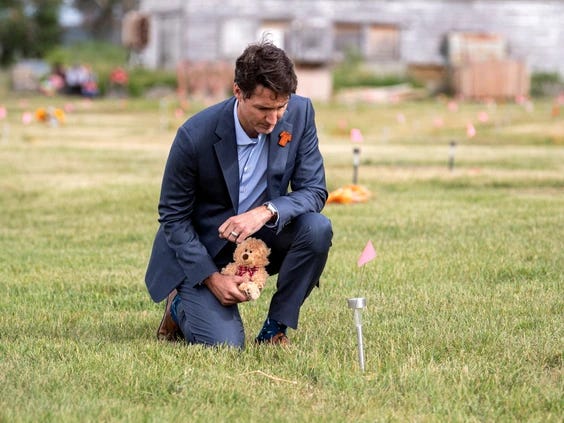How to debate a fascist: Hint - don't
Lessons from Bertrand Russell and other great things I found on the net this week
Debating fascists
An Etonian in journalism? Hard to resist apparently …
Evidence based development innovation
A tad credulous about standard market tropes - randomised trials are used in drug development so they must be the gold standard right? - this is nevertheless an encouraging success story - at least according to its proponents.
To mobilize investment in projects designed to assist those living in poverty, we helped establish social innovation funds in the United States and France. Development Innovation Ventures (DIV) at the US Agency for International Development, and the Fund for Innovation in Development (FID) at the Agence Française de Développement both take a page from venture capital’s playbook, but focus on currently underserved areas.
These funds identify innovations that can be scaled up, either by the agencies hosting them or by other governments, NGOs, or private companies. For example, DIV’s early, relatively modest investments in targeted instruction in India provided the necessary proof of concept that facilitated the Zambian government’s almost-nationwide expansion of the model, with assistance from the US government. It also proved instrumental in securing $25 million in complementary philanthropic support to help scale this innovation further. Millions of children in a dozen African countries now reap the benefits of these highly effective pedagogical programs.
This approach has been enormously successful. We recently analyzed the impact of the first two years of DIV investments, which included software to support community health workers in delivering basic services, water-treatment dispensers, and affordable glasses for presbyopia. Innovations funded by DIV during this period have affected more than 100 million people and generated at least $17 of social benefits for every $1 invested. This represents a social rate of return exceeding 143%, nearly ten times the initial 15% target set at DIV’s inception.
Previously Relocated Items
During it’s last OS upgrade my computer put this image a folder called “Previously Relocated Items”. In the interests of gratuitous transparency, the file it contains is this one.
Australia’s shit-show for the vulnerable
Mark Considine on the shameful state of our public services for the vulnerable, all helped along by economists preparedness to imagine that there’s little difference between silicon chips and potato chips, their refusal to engage with the actual material in front of them.
What current services offer is a “buyer beware” warning and a distant form of regulation that catches the occasional rogue but misses the day-to-day defects across the system. That’s the reason the aged care royal commission found that the majority of people in our old folks’ homes were malnourished. That’s the reason thousands of people were duped by vocational education providers signing them up to ghost courses.
The “choice” idea turns out to be a stalking horse for something else altogether. It enables governments to withdraw from social services. Top public servants now like to say they are “steering, not rowing,” which has come to mean that they lack knowledge of how services are actually produced and experienced. The choice revolution has become a means of risk shifting.
When US researchers asked a sample of the general American population if they want to choose their own cancer treatments, a strong majority answered yes. But when they asked people who actually had cancer, only a small number said yes. What they wanted was access to quality medical advice and a chance to be fully involved in decisions. That’s not choice, that’s voice.
The services in Australia’s service “markets” are a wide mix of the great and the ghastly — which is exactly what we would predict. Not all private providers are rogues, but it is also true that they all put shareholder value first; that’s the whole point of the market model. And once fraud becomes a regular event, heavier regulation and reputational damage become common.
This system produces a low-average model with some core characteristics. The owners of the services seek to increase their margins by de-professionalising the service and stocking it instead with poorly paid and untrained staff. Because they all do it and because they are all paid the same rate by the government, they face no market risk if they run a service that conforms to a poor minimum standard. Only the truly dreadful get noticed by the regulators.
Where a star-rating system is used to show consumers how the different providers are doing, the low-average system means that the best service only has to be slightly better than its terrible comparators in order to score points.
With weak oversight of the service itself, providers are tempted to put their best effort into marketing their service to would-be clients. If you browse the websites of aged care homes you will see that most offer “home-cooked meals” and a “place like home.” But no one knows exactly what that means until they move into a centre, which may be too late. Childcare centres promise educational activity, but there is no way to know if that ever happens or for how long in the average day.
What an astonishing graph!
And quite unlike Australia.
AI: by one of the engineer/entrepreneurs
Interesting interview with an AI engineer and entrepreneur. He regards the SciFi fantasy of super AGI taking over the world as fanciful, but there are plenty of other more mundane things to worry about.
GH: A decade from now, where do you think AI is going to be popping up in our daily lives, beyond the plaything it is at the moment?
AG: I think in the same way that most of us probably spend the majority of our time on a device, on a screen — whether it’s your phone or your laptop or TV — a big chunk of your time is going to be spent communicating with these models. They are going to be your interface to the world. If you want to get some shopping done, you’ll just talk to a bot and say, ‘Hey, can you get this delivered to my place?’ and it goes off and does it. ‘Hey, can you book a place for my wife and I in Hawaii in three weeks?’ You can just express your preferences or, even better, the bot already knows your preferences because you told it six months ago when you booked your last trip to Hawaii. I think you’re going to be interacting with these models as frequently as you interact with your cell phone. It will become the primary means by which you accomplish tasks online, get stuff done, because it’s so much nicer than having to Google Search something and then click through 30 links. It’s just so much nicer to have an assistant do that for you. So, everyone will get that assistant and it will become just a standard part in our lives in the same way we carry around this piece of glass and sand. …
GH: I was very struck by the analogy you used when you compared the engineering process behind AI to rocket development. If something goes wrong by a hair’s breadth then you have an explosion, and it is not an idle analogy to be using. There is a huge responsibility on you as the people at the forefront of this technology. I appreciate all the safeguards you’ve just described but is there really a way that you can control the outcome?
AG: I think there is. You make very conscious decisions about what sort of use you’ll tolerate with your models and you are empowered to enforce those rules and those terms. I don’t think you just build a model, and then release it into the world, and just hope things go well. It’s really not like that. We deploy in much more controlled scenarios — specifically, with enterprises where we know exactly what they’re using it for. It’s very high trust, very high visibility into what they’re using it for. So, we’re able to intervene. We aren’t just helpless in how these models get used. I think it’s very different if you open-source a model. Then, you’d better hope you’ve sufficiently mitigated misuse within that model because you don’t know what it’s used for — and you don’t know who is using it.
GH: That feels like an enormous danger, given we do have pretty sophisticated open-source models out there already, right?
AG: Yes. I totally agree. GH: Is there a specific place for regulation on that front?
Unmarked mass graves … um ungraves
Meanwhile on the off-ramp from reality:
It’s now been more than two years since Canada was convulsed by claims that 215 unmarked graves of Indigenous schoolchildren had been discovered on the grounds of a former residential school in Kamloops, British Columbia. No actual bodies or human remains were in evidence—just ground-penetrating radar data indicating regularly-spaced soil dislocations. But you wouldn’t have known that from the breathless manner in which the story was reported at the time. A Global News headline announced the “Discovery of Human Remains at Kamloops Residential School Grounds.” Another, at the Toronto Star, declared, “The Remains of 215 Children Have Been Found.”
I was one of the many Canadians who believed these headlines. The racist abuses meted out by Canada’s 19th- and 20th-century-era residential-school system, which had been created to “civilize” Indigenous people and strip them of their culture, has been widely discussed for decades. Given this dark history, it wasn’t hard to believe that some of the priests and educators who ran these schools hadn’t just been cruel and negligent (this much was already known), but also had committed acts of mass murder against defenceless children.
Without waiting for the hard evidence to be sprung from the earth, flags were lowered, July 1st Canada Day celebrations were cancelled, Justin Trudeau took a knee for the cameras, and the whole nation went into an utterly unprecedented collective period of self-flagellation. Before the summer was over, Trudeau pledged more than $300 million in new funding for Indigenous communities, so they could complete the grim task of scouring the earth for child corpses. The Canadian Press later called it the story of the year.
Twenty-four months later, much has changed. During this entire period, not a single unmarked grave, body, or set of remains is known to have been found at Kamloops, nor at any of the other First Nations communities that conducted similar ground-penetrating radar surveys.
Lovely
Gareth makes the case for recognising Palestine
So the question for us now is whether any further equivocation on this issue is in fact justified, or whether it is time for Australia to grasp the moment and explicitly recognise Palestinian statehood.
I believe we should, but the case has to be argued, not just asserted. The counter arguments need to be met head-on. There are three dimensions to the debate – moral, legal and political – and I will look at each in turn. …
There will still be those who lay all the blame for the effective collapse of peace negotiations on a Palestinian regime that former Labor MP Michael Danby, with his usual flair for constructive diplomacy, described earlier this year as “homophobic, fundamentally undemocratic, kleptocratic, misogynist” and “scumbag”.
No one doubts that the quality of Palestinian Authority leadership has been less than ideal, nor that Hamas’s formal (if not practical) position on Israel’s right to exist has been manifestly unhelpful.
But the evidence is clear – and my own years of direct talking with all parties, particularly as president of the International Crisis Group, strongly confirms it. The threat and reality of violence, whether by Hamas or anyone else, diminishes rapidly when Palestinians see a path ahead of genuine hope for a just and dignified settlement. And it escalates equally rapidly when they do not.
The argument that recognition is useless has gained more traction as hopes for a viable two-state solution continue to crumble – above all, as a result of the territorial fragmentation created by Israel’s indefensible West Bank settlement-building program. …
Giving Palestine some extra leverage and bargaining power is important and useful, whether or not the two-state solution proves to have any life left in it at all.
If it does, as we must all hope it does, this will be crucial in producing genuinely just and viable solutions to all the crucial outstanding issues, including boundaries, credible security guarantees for both sides, protection of the holy sites, and a formula that will credibly address the incredibly difficult issue of refugee rights.
If it does not – if the two-state solution is indeed permanently dead – and the only game left in town is the negotiation of a new, democratic, non-apartheid-cursed single state (into which the Palestinian population of the West Bank and Gaza is merged with fully equal rights to citizenship with Israel’s own Jewish population) then again anything that gives the Palestinians some more balanced power at the negotiating table is a consummation devoutly to be wished.
Casablanca again
Regular readers may remember my suggestion that Casablanca is reall Plato’s Symposium — yes, srsly. Well here’s a well produced 25 odd minute video on Casablanca as an unlikely classic — with various worthies, Steven Spielberg being the most well-known.
Letting off a bit of steam
The Hemingses of Monticello
Brad Delong takes up the story
Mary Hemings Bell, born in 1753, was the oldest half-sister of Sally Hemings. Yet Thomas Jefferson would not let her take he 11 and 9 year old children Joseph and Betsy with her when he hired her out as a slave to her future husband Thomas Bell. Interesting man, Jefferson:
Monticello: Mary Hemings Bell: ‘In the 1780s… Thomas Bell leased Mary Hemings Bell as a domestic servant from Jefferson. She went with her two youngest children, Joseph and Betsy—Jefferson had already given her two eldest, Daniel and Molly, to his sister and daughter. Mary Hemings Bell became Thomas Bell's common-law wife…. Thomas Bell unofficially freed her, acknowledged their two children, and bequeathed his estate to them. Jefferson refused to sell Mary Hemings Bell's older children, Joseph Fossett and Betsy Hemmings…. Mary Hemings Bell maintained close ties with her still enslaved children, who were only eleven and nine years old when separated from their mother….
During the crisis of 1827, when members of her family were sold at the Monticello dispersal sale, Mary Bell's economic standing enabled her son Joseph Fossett to arrange for the purchase of a number of his own children. Mary Hemings Bell and her descendants were an integral part of the Charlottesville community throughout the years. Thomas and Mary Bell's free daughter, Sally Jefferson Bell, married Jesse Scott, an accomplished musician. Scott and his sons played for dances and entertainments all over Virginia. Mary Hemings Bell and her descendants occupied a house on Charlottesville's Main Street for a century…
On needing boundaries
Hilarious
The pantomime is over for Prigozhin
I have no idea whether this guy is a good source of thinking on the subject, but I was struck by the extremes to which performativity has come in our time. Trump, Boris, Morrison all of whom put performance ahead of the achievement of any coherent purpose. They did it so radically that they were even incapable of sufficient discipline to serve their own interests! Anyway, that seems to be the kind of world we’re in. It’s one in which great causes come and go but they don’t even have coherent platforms — causes like Black Lives Matter and the yellow vests.
Western pundits were agog when Prigozhin appeared to go so far as to criticise Putin, promising to remove his forces from the line and threatening Shoigu with execution. He even appeared to label Putin “grandpa” — a nickname made popular by jailed opposition leader Alexey Navalny — in a caustic video. Many wonder whether Wagner’s leader might attempt to seize control of the military leadership or even launch a coup. But recent developments suggest that this pantomime is about to end. Prigozhin’s power is to be curtailed — and there’s little he can do about it.
Prigozhin, an ex-convict known as “Putin’s chef”, has long been a master self-publicist. His Wagner Group, whose state connections were until recently officially denied, is an exquisitely branded enterprise housed in a glass office tower in St. Petersburg. The group’s social media presence is no less brazen. The online world of the Wagner “musicians”, as the organisation’s soldiers are known, is made up of thousands of gloomy TikTok videos displaying balaclava-wearing, skull-emblazoned troops rattling off machine gun rounds and rockets. Wagner musicians and their online fans soundtrack videos of war crimes and violent fighting with uber-macho hip hop beats and ceaseless nationalist and racist commentary about the Ukrainian enemy. In this world, morality and ethics seem to have been cast aside in favour of macabre destruction for its own sake. …
However, Prigozhin may be about to discover the limits of the support that can be built through memes and virality. … His followers prize manhood, masculinity, and violence more than any particular leaders: they are nihilists out for themselves, not the sort of citizens who will die for their leader’s cause. … In some senses, Prigozhin is an embodiment of the Putin era’s postmodern culture, in which reality is created, distorted, and destroyed momentarily by an arbitrary state. He stands for no ideas, cannot build elite coalitions, and alienates the general public. Through money, force of will, and outlandish PR, he has turned himself into a heavyweight — but his importance will likely diminish now the state has started to turn the screws.
This self-interested support has given Putin an easy means to drop the final curtain on Prigozhin’s theatrics. In a meeting last week, he confirmed that all frontline troops — including those attached to Prigozhin and Wagner — will be forced to sign a contract with the state by 1 July. “If there’s no contract with the state,” explained Putin, “there can be no social guarantees [for the troops].” In other words, the state is about to usurp Prigozhin’s sole hold over Wagner: the promise that he can provide money, support, and freedom to the men under his command.
The inconsequential fate of public service reform
A good piece by Paddy Gourley
So why are the proposed legislative changes for the APS so confused, illogical and insipid?
There is probably no simple answer to that question, although a lack of stomach and imagination is evident. It may also be said that big changes would shift relative powers at the official and, to a lesser extent, ministerial levels. When that happens, it is all too common for the losers to circle their wagons and protect their territory. Could that be happening here? It’s hard to tell, but it would be nice to know.
Meanwhile, the reform cart moves slowly on with so lightweight a cargo that a former public service commissioner, Andrew Podger, has suggested that it should be parked until the report of the robodebt royal commission is available. That’s not a bad idea: it’s short odds that the commission’s report will show up the present legislative proposals as wholly inadequate and provide the grounds for a fresh, useful and more courageous attempt to raise the integrity and effectiveness of the federal public service.

















